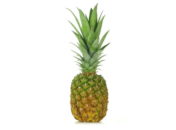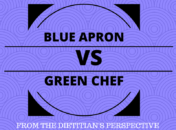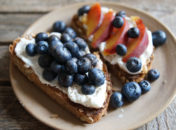I’m about to get pretty snobby about salad. You’ve been warned.
I feel like people hate eating salads because of the typical “House Salad” they’ve been introduced to at restaurants: iceberg lettuce topped with a few cherry tomatoes, some shredded carrots, and a few strips chunks of red onion. Oh, and some kind of dressing that has the consistency of watered down gelatin (shudder). Why do I hate the house salad so much?
-
Not only is iceberg void of nutrition, but it also has zero flavor (I guess that’s what the dressing is for?).
-
At least one of the cherry tomatoes is bound to be rotten. have you ever had a rotten cherry tomato squash open in your mouth? It’s disgusting. And they’re tricky little fellas too because on the outside they look so shiny and fresh but on the inside, it’s a whole other story.
-
I’m fine with the carrots, they can stay.
-
Raw red onions are a culinary weapon that must be used wisely. You cannot just willy nilly chop those things up into chunks, throw them on some iceberg, and call it a day. There’s a reason they make you cry when you cut into them.
No salad could be more boring and tasteless; no wonder why people think they hate salads. So thank you, restaurants who serve these salads, for making my job harder. Trying to sell a salad-hater on eating salad is not easy. But that’s okay because this is the path I’ve chosen and today, I’m going to teach you how to build (or order) a salad that you will actually enjoy. A salad that has flavor, texture, and nutrition. A salad that you will actually crave and that I won’t have to convince you to eat. And finally, a salad that counts as a meal and will keep you energized for hours after. Here are a few tips to help you build your next power salad.
1) Start with a Leafy Base
Greens are nutrition powerhouses and outside of iceberg, will add some flavor. Start with 1-2 cups of greens like green or red lettuce, romaine, kale, spinach, arugula, mixed greens, or a unique variety from your local farmers market. Typically, the darker the green, the more nutritious. If you don’t like the taste of leafy greens, start with a more mild green like a green lettuce or a romaine which don’t have a strong flavor and lend a nice crisp texture. Also, consider mixing spinach with crispy romaine to get the best of both worlds.
2) Add at Least 2 Colors of Vegetables (cooked or raw)
Think of the rainbow and vary the colors of veggies that you add. Color = nutrition, so the more the merrier. Aim for about 1/2 cup of each color.
Red - beets, bell peppers, radishes
Orange - bell peppers, carrots, sweet potatoes
Yellow - corn, bell peppers, summer squash
Green - broccoli, peas, asparagus, green beans, bell peppers
Blue/Indigo/Violet - cabbage, eggplant, potatoes
White - cauliflower, potatoes, onions (thinly sliced), mushrooms
Salads don’t have to be completely raw, either. Adding chilled, leftover roasted/cooked veggies is a game changer; roasted veggies contain that umami flavor, the savory fifth taste, and work beautifully on a salad. Adding raw chopped scallions over chilled roasted veggies is one of my favorite ways to include cooked veggies on my salad; scallions offer a subtle onion flavor and a crunchy contrast to otherwise soft roasted veggies.
Fun Fact: Many people think that eating raw vegetables is always healthier than eating them cooked because nutrients are lost during cooking. This is not always true. For example, beta-carotene levels in tomatoes and carrots actually increase when cooked. Strive for balancing your day to include both raw and cooked veggies.
2) Don’t Forget the Protein
Whether it’s grilled chicken or black beans, don’t leave out the protein. Protein will help make your salads more filling and sustain energy levels longer. No one likes getting hangry 45 minutes after eating a salad. Here are some protein options:
Plant-Based: beans (black beans, chickpeas, white beans, kidney beans, etc.), lentils, edamame, tempeh, tofu, nuts, seeds
Proper Portion size: 1/2 cup beans/legumes, handful of nuts/seeds
Animal-based: cheese, eggs, chicken, beef, fish and seafood.
Proper Portion size: Roughly 3-4 oz (about the size and thickness of the palm of your hand)
2) Add some Crunch
As with all meals, texture adds another layer to salads and makes them more fun to eat. Try some of these healthy add-ins:
-
Almonds, cashews, walnuts, sunflower seeds, chia seeds
-
Croutons, crushed tortilla chips, crushed pita chips, crushed terra chips
3) Add a Touch of Sweetness with Fruit
Meals that include all five basic tastes (sweet, salty, bitter, sour, and umami) are an amazing experience that will keep you going back for more. Try to keep this in mind when building your salads. Here’s an example of a salad that would contain all basic flavor profiles:
Arugula (bitter) and romaine topped with roasted mushrooms (umami), barley, goat cheese, blueberries (sweet), lemon vinaigrette (sour) and a sprinkle of sea salt (salty).
There are many ways to add sweetness to your salad, but consider adding fruit as a natural sweetener and one that also lends some nutrition.
4) Round it out with Whole Grains
Whole grains add some extra protein and fiber which will help your salad “stick to your ribs” a little longer. They also provide some B-vitamins and cancer-fighting antioxidants.
1 cup Cooked: quinoa, barley, brown rice, white rice, rice pilaf, farro, couscous, whole wheat pasta.
5) Dress it Up
Normally, I say use whatever dressing makes your salad taste better to you. But since I’m being snobby, I’m going to suggest that you forget about using that store-bought crap and A) make your own, B) order a house-made dressing, or C) choose olive oil and vinegar if no house-made is available. The majority of mass manufactured salad dressings contain thickeners and stabilizers which give it this weird, jelly-like consistency and typically have a bland, fake flavor. Salad dressings can often make or break a salad so choose a good one. If you can, make one at home. It really doesn’t take that long. Here are some recipes for homemade salad dressings that I’ve tried and love:
Basic Balsamic Vinaigrette
Now get out there and build a better salad!
Cheers,
Ashley







2 Comments
[…] THE FRESH BEET — I’m about to get pretty snobby about salad. You’ve been warned. […]
[…] THE FRESH BEET — I’m about to get pretty snobby about salad. You’ve been warned. […]